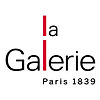Vincent Yu
SELECTED WORKS
The Vanishing Coastline
Hong Kong – a metropolis of seven million people. Its coastline totals 870 kilometres , formed by 218 islands. Through the years, 16 islands have been lost to reclamation works and the erection of reservoirs. Shorelines of the yesteryears are only found in old photographs. In Wanchai alone, the coastline has undergone changes six times. Reclamation has also been relentless in both Central and West Kowloon.
He embarked on this project in 2003. Whenever free, he would spend time recording the coastlines in different parts of Hong Kong. The journey – likening the one in “Alice in Wonderland” -- brought him to places from abandoned rocky shores to old ferry piers that have fallen into ruins. In some places, the shoreline simply serves as the backdrop to sleek high-risers. Each sight has left a unique impression on him. At times, it felt surreal as if he had disappeared off to outerspace. Other scenes reminded him of his favourite classical music – elaborate and decadent.
Vincent has always been fond of capturing things whose existence are under threat. In this case, he hopes that the work would serve as scattered evidence of what the city once was. It is his wish that our decedents in years to come would still have means to find out about the past.


HKG
In 1842, China was defeated in the first Opium War and the Qing dynasty government signed the Treaty of Nanking, handing over Hong Kong island to the United Kingdom. Hong Kong opened up to the world.
In May 1950, seeking for a better life, my father who was then 17, took a boat from Zhongshan to Hong Kong, just before restrictions were imposed on immigration.
I was born 124 years after the opening up of Hong Kong. I lived in a boarding room in a four-storey pre-war building next to a pawn shop. I ate Christmas dinner at the Boston restaurant and watched movies at the Lido theatre. The movies "Execution in Autumn" and "Eight Hundred Heroes" moved me. I have no memories of the 1967 riots. I remember only my father delivering oil to mainland China, and listening to radio programs on Chinese politics. These fragments of recollection gave me my first taste of “national education”.
In 1978, I started secondary school. Chinese and history were most interesting for me. I learnt how changes in dynasty were caused by friends, eunuchs, foreigners and corruption. Then, modern Chinese history was not in the curriculum. I came across "The Revenge of Heaven: Journal of a Young Chinese", which was one of few books depicting the Cultural Revolution. It allowed me to reflect on the basic nature of the Chinese people through its five thousand year long history. I got interested in photography before I graduated from high school and my father gave me my first camera.
I visited mainland China for the first time in the mid 1980s and I travelled on the Yellow River from Lanzhou to Shenzhen and then to Hong Kong. I remember tucking into a bowl of Lanzhou noodles for the first time on an icy cold morning and drinking a bottle of coke with friends on a street in Zhengzhou filled with beggars, a drink that was worth a night's stay in a hotel.
In 1985, I began working as a photojournalist. I witnessed the influx of Vietnamese refugees; Queen Elizabeth's last visit to Hong Kong in 1986, the same year that Hong Kong governor Sir Edward Youde died of a heart attack while working in Beijing; the June 4th Tiananmen incident in 1989; the Sino-British talks on the handover; the brain drain that followed and the appointment of Chris Patten as the last governor of Hong Kong in 1992.
In 1997, Hong Kong was returned to China. Deng Xiaoping’s promise was put to test. He had vowed that there would be 50 years of no change for Hong Kong under the "one country, two systems" principle where our horse racing and parties would continue.
– Vincent Yu
VIDEOS
ABOUT THE ARTIST
Vincent Yu, born and raised in Hong Kong, has worked as an Associated Press photographer covering major news events across the Asia-Pacific region since the mid-1980s. As a close observer of Hong Kong’s social and political development, Yu has acquired a unique sensitivity towards the territory's ever-changing cityscape and environment which are often reflected through his imaginaries.
Yu is an award-winning photographer whose works cover both the journalistic and documentary genre. He is the first Hong Kong photographer to have been recognised by World Press Photo and his works are being collected by the Hong Kong Heritage Museum. Yu is regarded as an influential figure in photography in Hong Kong. He was the Chairman of the Hong Kong Press Photographers Association, and was a founding member of the Hong Kong International Photo Festival. From 2010- 2012, he operated The Upper Station Photo Gallery in Hong Kong, which showcased the works of some of Hong Kong’s most acclaimed photographers.




